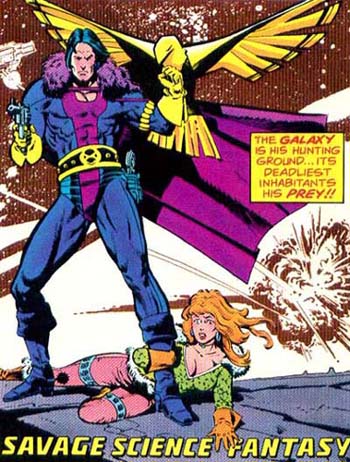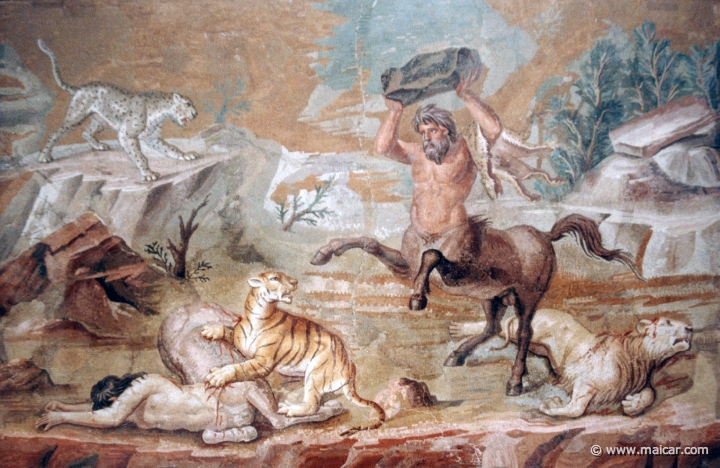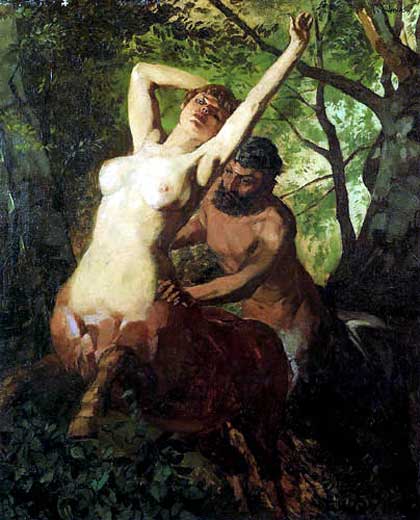Warlord (vol. 2) #2 (February 1992)
Written by Mike Grell; Art by Dameon Willich and Rick Hoberg
Synopsis: A man trudges through the snowy wastes of what must be the Skartarian Terminator. He carries something wrapped in his cloak, something that compels him in his task. In the town of Hazrak, he’s confronted by robbers eager to get a look at what he holds so dear, but he dispatches them easily. Nothing will get in his way.
He arrives at a strange temple. Inside a woman, a priestess, is waiting.
He lays his burden upon an alter and:
Meanwhile, the minstrel accepts the challenge the veteran gave last issue—but only if the veteran accompanies him. The old man agrees.
They’ll need horses for their journey, though, and neither has any coin. The minstrel picks the purse of a passerby. He grew up on the streets and knows how to get by.
After acquiring horses, the two ride to Castle Deimos:
Initially, they are chased from the gate by phantom monsters. The minstrel realizes that he and the veteran saw different monsters and notices the horses weren’t frightened. It’s an illusion, based on fear. They advance again, cautiously, and this time pass through the phantoms unharmed. A man greets them and says the Mistress will see them, now.
She says the minstrel has “come seeking a hero” like she “came seeking a father.” She fears they both will “have to get use to disappointment.”
The sorceress relates how her father (devastated by the death of her mother, perhaps) shipped her off to live with an aunt, while he went off to fight in a war. When he didn’t return, she went looking for him, and found him in Skartaris. Even there he couldn't stay committed to the rebellion he started or the warrior queen he loved. He always needed a challenge: something new to discover, something new to conquer.
He comes and asks for her help from time to time. She never denies him, but she never lets him close anymore.
She leaves the minstrel and veteran with one final thought: “He’s not a bad man,” she says. “Not in his heart…”
After the two have left Castle Deimos, Jennifer Morgan looks into her crystal ball and sees and image of her father. She tells him she misses him. Though of course, there is no one to hear.
Things to Notice:
- On the cover, Grell puts Jennifer in the tiara she wore in her first "in-costume" appearance in issue #54.
Where It Comes From:
Grelle expands a bit here on the details he presented in issue #38 in regard to Jennifer's and her father's pre-Skartarian histories.
The flashbacks in this issue show Jennifer's hair as white in her childhood. This is consistent with her earlier portrayals where it was blonde until she learned magic. (The change in her hair color was never explained in-story.)
Grelle expands a bit here on the details he presented in issue #38 in regard to Jennifer's and her father's pre-Skartarian histories.
The flashbacks in this issue show Jennifer's hair as white in her childhood. This is consistent with her earlier portrayals where it was blonde until she learned magic. (The change in her hair color was never explained in-story.)




























